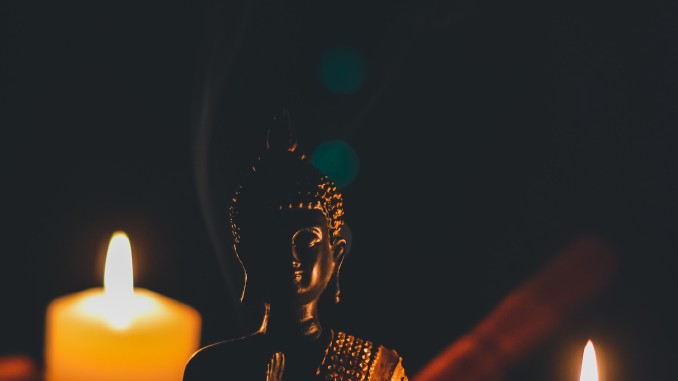What does 'Samadhi' mean?

Alright, buckle up, yogi amigo, because we’re about to dive into the mystical world of Samadhi.
Samadhi is like the ultimate superpower of yoga. It’s like when you reach the top level of a video game and unlock a whole new set of skills. It’s basically the state of complete bliss and unity with the universe that you achieve through meditation and other yogic practices.
Think of it like this: You know when you’re really into a movie and you get totally absorbed in the story? You forget about everything else, and you’re just completely in the moment, right? Well, Samadhi is like that, but times a billion. It’s a state of pure consciousness where you transcend all physical and mental limitations and become one with everything.
But don’t think it’s easy, my friend. Achieving Samadhi takes some serious practice and dedication. You’ve got to train your mind to focus and let go of all the distractions around you. It’s like trying to balance on a unicycle while juggling flaming torches—not easy, but totally badass if you can do it.
So, why bother with all this Samadhi stuff? Well, for starters, it’s pretty darn awesome. But more importantly, it’s said to bring all kinds of benefits to your life. You’ll have greater clarity of mind, increased creativity, and a deeper understanding of yourself and the world around you. And who wouldn’t want that, right?
So go forth and meditate, my yogi friend. Who knows—with enough practice, you might just unlock the ultimate yoga superpower and achieve Samadhi. Namaste, baby!
More information
First things first, Samadhi isn’t just one-size-fits-all. There are different types of Samadhi, like Savikalpa Samadhi and Nirvikalpa Samadhi. Savikalpa Samadhi is like dipping your toes into the mystical waters of oneness, while Nirvikalpa Samadhi is like doing a full-on cannonball into the pool of cosmic consciousness.
It’s the difference between riding a kiddie roller coaster and jumping out of a plane (with a parachute, of course). Both are exhilarating in their own way, but one is definitely more intense.
Also, it’s worth mentioning that Samadhi isn’t just for yogis and mystics. Even if you’re not into chanting mantras and twisting yourself into pretzels, you can still experience moments of Samadhi in everyday life. Ever get lost in a beautiful sunset or get completely absorbed in a creative project? That’s a taste of Samadhi, my friend.
You don’t have to wear a turban or light incense to get there (although those things can certainly help set the mood).
But here’s the thing: Samadhi isn’t the end-all, be-all of yoga. It’s not like once you achieve Samadhi, you’re done with yoga forever. It’s just one aspect of the practice, albeit a really cool one. Yoga is a journey, not a destination, and Samadhi is just one stop along the way.
So, keep on trucking on your yogic path, my friend. Who knows what kind of magical experiences await you on the road to Samadhi (or wherever else your journey may take you)?
